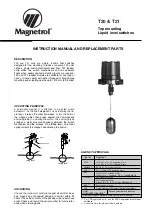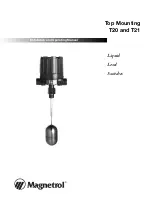
IP Multicast Overview
313
PIM-DM (Protocol-Independent Multicast Dense Mode, PIM-DM)
PIM dense
mode is suitable for small networks. It assumes that each subnet in the network
contains at least one receiver interested in the multicast source. As a result, multicast
packets are flooded to all points of the network, consuming network bandwidth and
increasing router processing. To reduce network resource consumption, branches that
do not have members send Prune messages toward the source to reduce the
unwanted/unnecessary traffic. To enable the receivers to receive multicast data
streams, the pruned branches can be restored periodically to a forwarding state. To
reduce latency time, the PIM dense mode uses the prune mechanism to actively
restore multicast packet forwarding. Periodic flood and prune are characteristics of
PIM dense mode. Generally, the forwarding path in dense mode is a “source tree”
rooted at the source with multicast members as the branches. Since the source tree
uses the shortest path from the multicast source to the receiver, it is also called the
shortest path tree (SPT).
PIM-SM (Protocol-Independent Multicast Sparse Mode, PIM-SM)
Dense
mode uses the flood-prune technology, which is not applicable for WAN. In WAN,
multicast receivers are sparse and therefore the sparse mode is used. In sparse mode,
hosts need not receive multicast packets unless, by default, there is an explicit request
for the packets. A multicast router must send a join message to the RP (Rendezvous
Point, which needs to be built into the network and is a virtual place for data
exchange) corresponding to the group for receiving the multicast data traffic from the
specified group. The join message passes routers and finally reaches the root, that is,
the RP. The join message becomes a branch of the shared tree. In PIM sparse mode,
multicast packets are sent to the RP first, and then are forwarded along the shared
tree rooted at the RP and with members as the branches. To prevent the branches of
the shared tree from being deleted, PIM sparse mode sends join messages to
branches periodically to maintain the multicast distribution tree.
To send data to the specified address, senders register with the RP first before
forwarding data to the RP. When the data reaches the RP, the multicast packets are
replicated and sent to receivers along the path of the distribution tree. Replication
only happens at the branches of the distribution tree. This process can be repeated
automatically until the packets reach the destination.
Forwarding IP Multicast
Packets
In the multicast model, the source host sends information to the host group
represented by the multicast group address within the destination address fields of
the IP packets. The multicast model must forward the multicast packets to multiple
external interfaces so that the packets can be sent to all receivers.
RPF (Reverse Path Forwarding)
To ensure that a multicast packet reaches the router along the shortest path, the
multicast must depend on the unicast routing table or a unicast routing table
independently provided for multicast to check the receiving interface of multicast
packets. This check mechanism is the basis for most multicast routing protocols
performing multicast forwarding, which is known as RPF (Reverse Path Forwarding)
check. A multicast router uses the source address from the multicast packet to query
the unicast routing table, or the independent multicast routing table, to determine
that the incoming interface on which the packet arrives is the shortest path from the
receiver to the source address. If a source tree is used, the source address is the
address of the source host sending the multicast packet. If a shared tree is used, the
source address is the address of the root of the shared tree. When a multicast packet
arrives at the router, if RPF check succeeds, the packet will be forwarded according to
the multicast forwarding entry. Otherwise, the packet will be dropped.
Summary of Contents for 5500 SI - Switch - Stackable
Page 24: ...24 ABOUT THIS GUIDE...
Page 50: ...50 CHAPTER 1 GETTING STARTED...
Page 54: ...54 CHAPTER 2 ADDRESS MANAGEMENT CONFIGURATION...
Page 78: ...78 CHAPTER 3 PORT OPERATION...
Page 88: ...88 CHAPTER 4 XRN CONFIGURATION...
Page 122: ...122 CHAPTER 8 VLAN VPN CONFIGURATION...
Page 216: ...216 CHAPTER 15 SSH TERMINAL SERVICES...
Page 268: ...268 CHAPTER 16 IP ROUTING PROTOCOL OPERATION...
Page 308: ...308 CHAPTER 17 NETWORK PROTOCOL OPERATION...
Page 349: ...349...
Page 350: ...350 CHAPTER 18 MULTICAST PROTOCOL...
Page 522: ...522 CHAPTER 22 FILE SYSTEM MANAGEMENT...
Page 584: ...584 CHAPTER 30 PASSWORD CONTROL CONFIGURATION OPERATIONS...
Page 600: ...600 CHAPTER 31 MSDP CONFIGURATION...
Page 614: ...614 CHAPTER 32 CLUSTERING...
Page 670: ...670 CHAPTER C AUTHENTICATING THE SWITCH 5500 WITH CISCO SECURE ACS...
















































